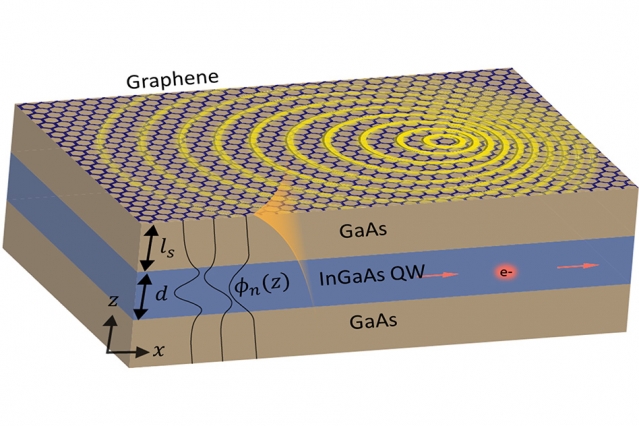Researchers have now discovered a new way to enhance the interactions between light and matter which may one day lead to much more efficient solar cells as well as fully tunable lasers and light-emitting diodes (LEDs).
The whole idea behind this new approach is to find a way of getting photons to match more closely to electrons. Normally these two particles have a weak link. Bringing them closer together will enable greater control over the way in which they interact.
Silicon is a very important substance when it comes to the manufacturing of most modern-day electronics. But when it comes to anything that involves light, such as solar cells and LEDs, silicon isn’t as well suited. Improving the way in which light interacts with substances such as silicon could be a huge leap forward towards the integration of photonics with electronic semiconductor chips.
While various people have looked into this problem, most have focused on the actual silicon. But “this approach is very different – we’re trying to change the light instead of changing the silicon,” explains Ido Kaminer, one of the authors of the study, and a professor of physics at Technion and former MIT postdoc. One way to do that is to slow down the light enough so that it lowers the momentum of the photons significantly in order to nearer to the electrons.
During the study, they used a thin-film material coated with a layer of graphene in which to slow light by a factor a thousand. The material changes the behavior of the photons in a way that allows them to be easily controlled. In doing this the researchers were able to increase the frequency of the emissions from 20 to 30 percent.
When a photon interacts with a pair of oppositely charged particles they produce what’s known as a quasiparticle. This particular quasiparticle is called a plasmon-polariton and is a kind of oscillation that occurs in exotic materials.

Courtesy of the researchers
According to MIT graduate student and author on the study, Nicholas Rivera, this oscillation process effectively shrinks the wavelengths of light considerably to an almost atomic scale. Once the light has shrunk it can then be absorbed or emitted by the semiconductor. These properties can be controlled when using graphene-based material by simply varying the voltage that’s applied.
While it’s still early days for this kind of research, the researchers are hopeful that it could lead to a new wave of solar cells being developed that are capable of absorbing a much wider range of light wavelengths. This would make them far more efficient than they are now. The research could also pave the way for the introduction of tunable light-producing devices such as lasers and LEDs.
“The work is very general,” says one of the study’s authors Yaniv Kurman of Technion (the Israel Institute of Technology). “We could use several other semiconductor materials and some other light-matter polaritons. By closing the momentum gap, we could introduce silicon into this world of plasmon-based devices.”
More News to Read

